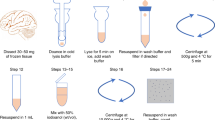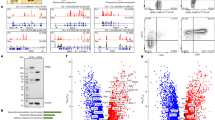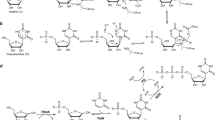Abstract
PETRI1 described “kleine gesteilte Kernprominenzen”, small, stalked, deeply staining buds attached to the contorted ring-like nucleus of the mature neutrophil leucocyte of the mouse. La Cour2 showed that they arise from the deeply staining heterochromatic parts of the nucleus, that they are Feulgen-positive and so contain desoxyribose nucleic acid, and are ultimately split off and lie free in the cytoplasm.
This is a preview of subscription content, access via your institution
Access options
Subscribe to this journal
Receive 51 print issues and online access
$199.00 per year
only $3.90 per issue
Buy this article
- Purchase on SpringerLink
- Instant access to full article PDF
Prices may be subject to local taxes which are calculated during checkout
Similar content being viewed by others
References
Petri, S., Acta Path. Microbiol., Scand., 10, 159 (1933).
La Cour, L. F., Proc. Roy. Soc. Edin., 62, 73 (1944).
Author information
Authors and Affiliations
Rights and permissions
About this article
Cite this article
DISCOMBE, G. Extrusion of Nucleic Acid from the Nuclei of Human Granulocytes. Nature 157, 370–371 (1946). https://doi.org/10.1038/157370d0
Issue date:
DOI: https://doi.org/10.1038/157370d0
This article is cited by
-
Die Chromatinstruktur der Granulocytenkerne in ihrer Beziehung zu den geschlechtsspezifischen Kernanhangsgebilden
Klinische Wochenschrift (1959)
-
Morphologische und statistische Untersuchungen an Zellkernen von Ratten und M�usen zur Frage einer cytologischen Geschlechtsdiagnostik
Zeitschrift f�r Zellforschung und Mikroskopische Anatomie (1958)



